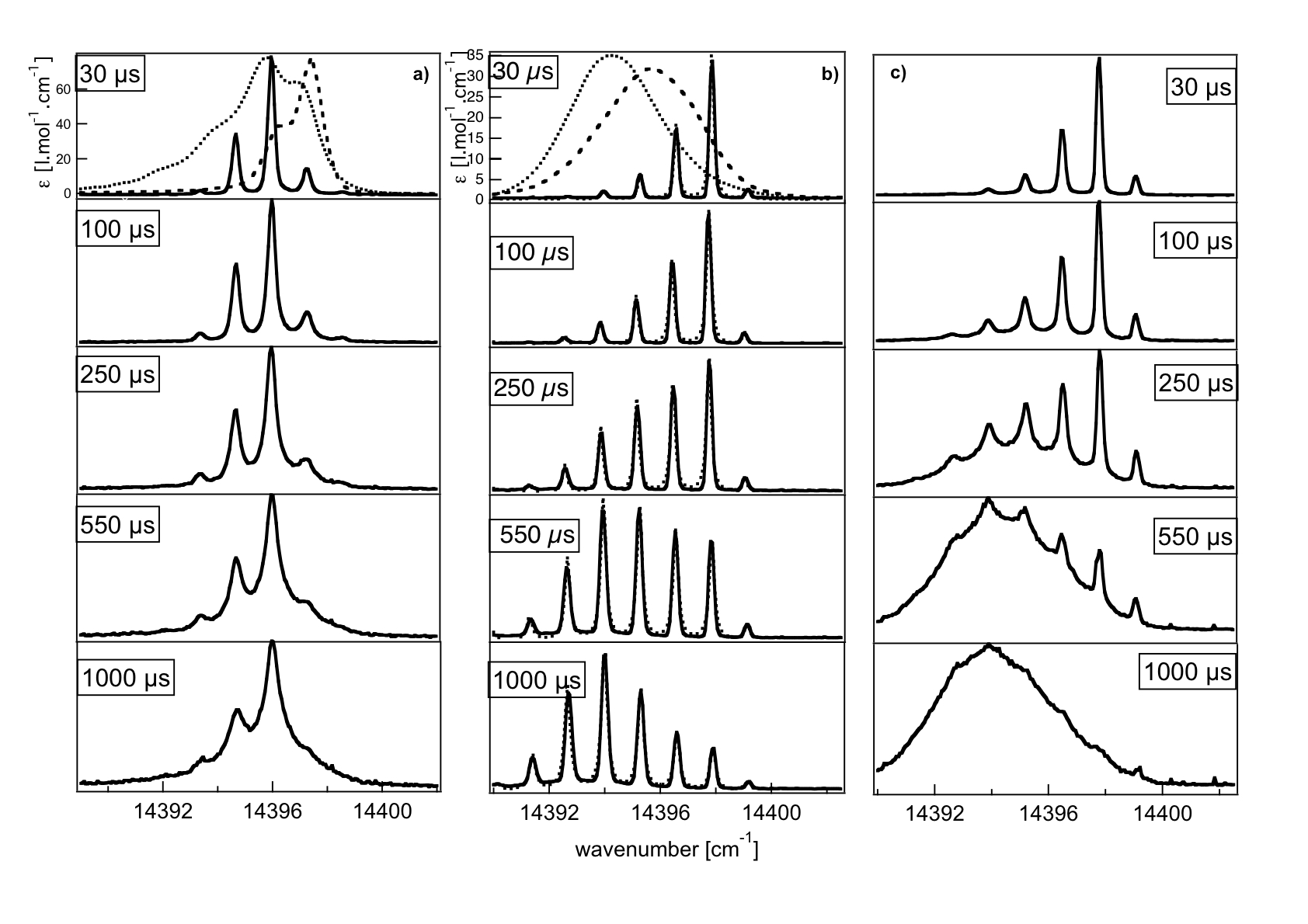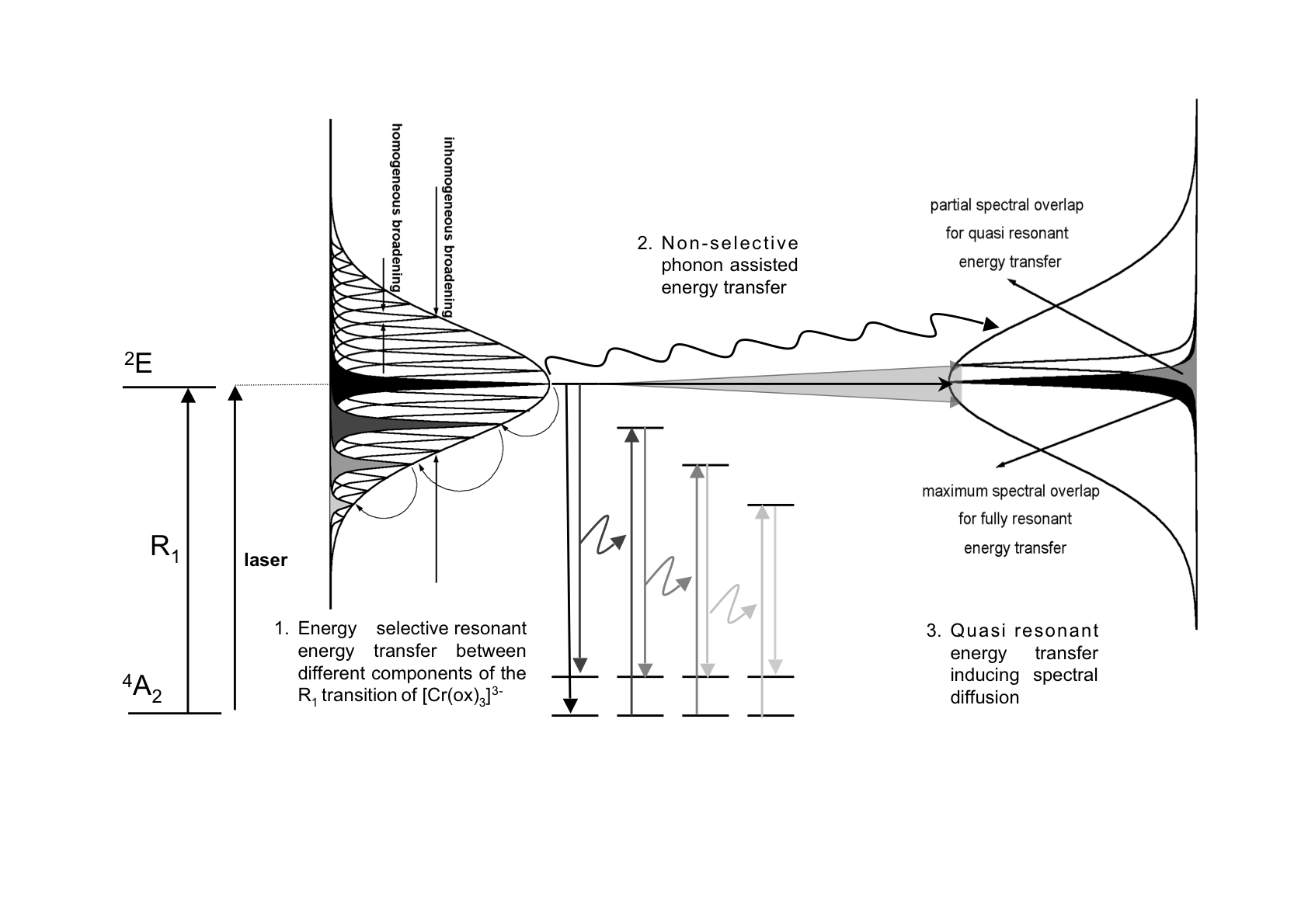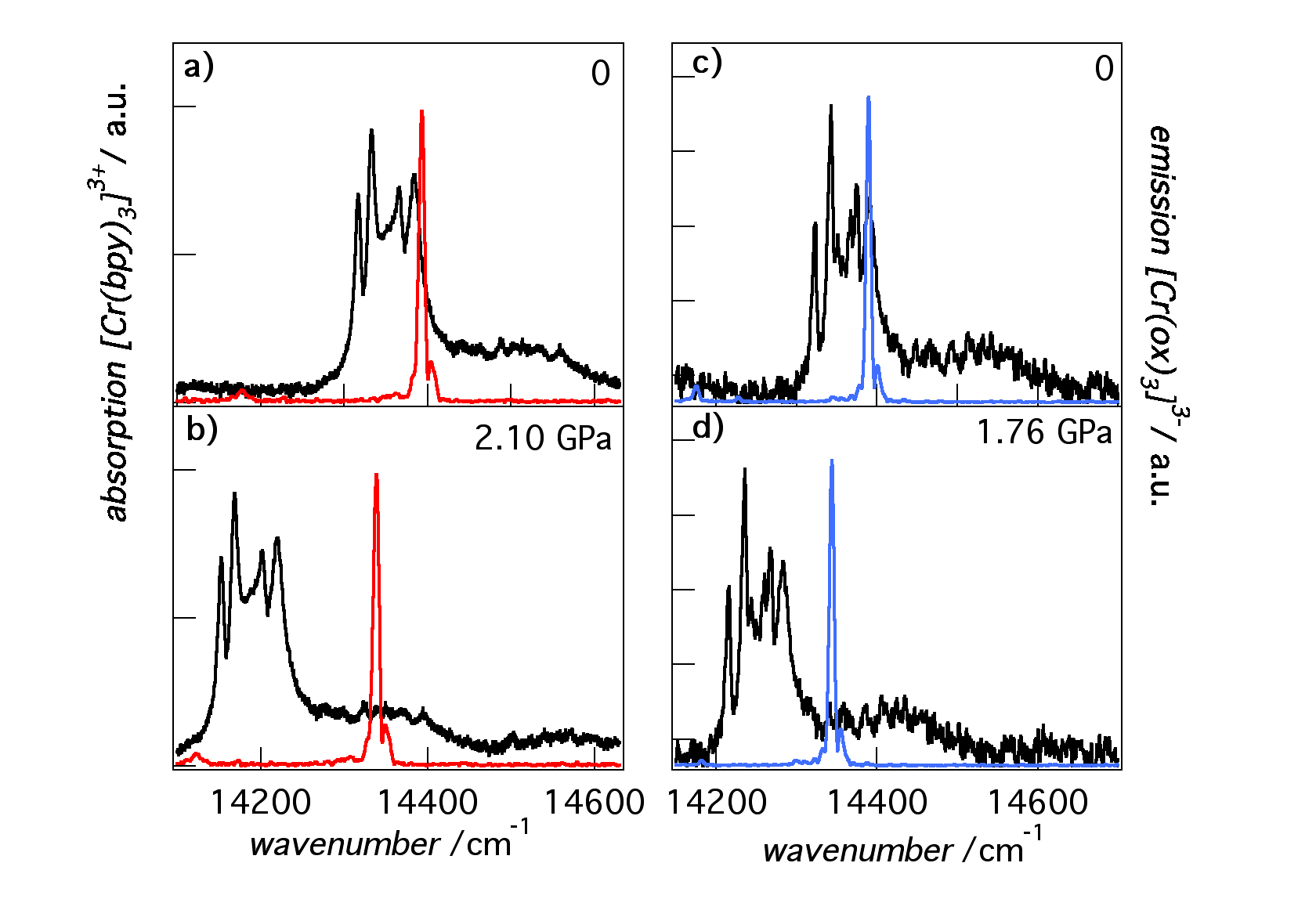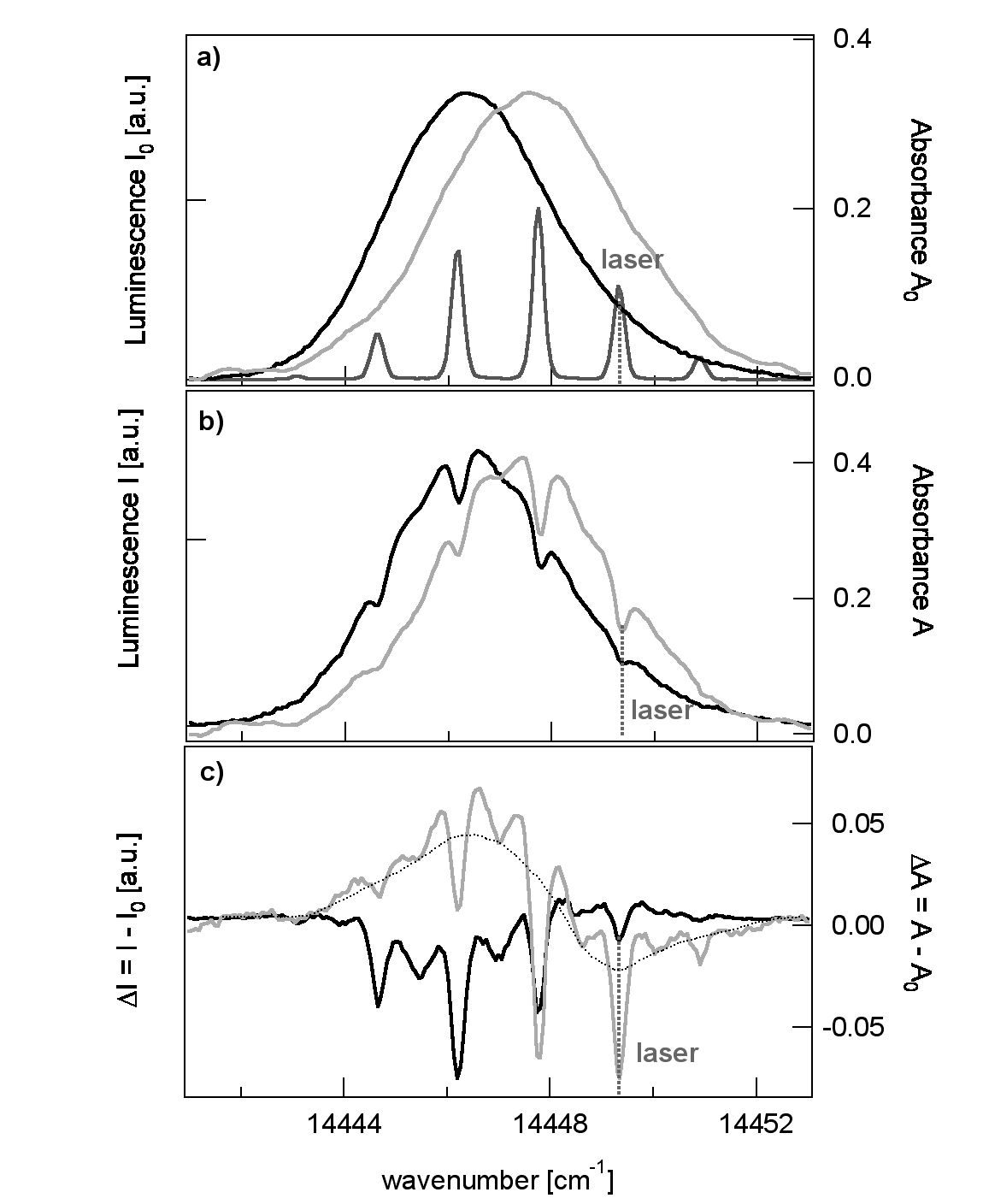Excitation Energy Transfer and Energy Migration
1) Excitation Energy Migration in Oxalate network structures
Excitation energy migration is an important phenomenon at high concentration of luminescent chromophores.
In crystalline solids it results in a quenching of the intrinsic luminescence of the chromophore as the
excitation energy migrates to impurity centres or other forms of trap sites. As concluded from the extensively
studied systems where Cr3+ is doped as the active chromophore into inert host lattices, energy migration in
crystalline solids is usually a phonon-assisted process, in which the simultaneous creation or annihilation of
a phonon helps to bridge the energy miss-match in the energy levels of two neighbouring chromophores within a
inhomogeneously broadened absorption band. However, in the three-dimensional network systems [Ru(bpy)3][NaCr(ox)3]
and [Rh(bpy)3][NaCr(ox)3]ClO4, it proved possible to unambiguously identify three different mechanisms for energy
migration within the R1 line of the 4A2->2E transition of Cr3+. In addition to the common temperature dependant
phonon-assisted process, a resonant process between the zero-field split components of the 4A2 ground state leading
to a multi-line pattern in an Fluorescence Line Narrowing spectrum and quasi-resonant process within the same
component leading to fast spectral diffusion can be identified at very low temperature. The parameters governing
these processes are discussed and the behaviour of the model systems is compared to more conventional doped oxides
and related systems.


|
2) Effect of External Pressure on the Energy Transfer in Oxalate network structures
Excitation energy transfer from [Cr(ox)3]3- to [Cr(bpy)3]3+ in the three-dimensional oxalate network
[Cr(bpy)3][NaCr(ox)3]ClO4 occurs via two types of interaction, the super exchange coupling and the
dipole-dipole interaction. The energy transfer probability for both mechanisms is proportional to
the spectral overlap, however the energy transfer rates are not of the same order of magnitude.
The super exchange coupling correspond to the fast contribution to the energy transfer rate, with
kETex > 106 s-1, while the dipole dipole interaction is the slow contribution of the energy transfer
with a rate of kETdd~102 s-1. with increasing external pressure around [Cr(bpy)3][NaCr(ox)3]ClO4,
the spectral overlap between the donor's emission and acceptor's absorption decrease, since the last
two don't have the same shift rate in high pressure experiments. In the case of
[Rh0.965Cr0.035(bpy)3][NaAl0.99Cr0.01(ox)3]ClO4 the spectral overlap is reduced about 6 times
with increasing pressure from 0 GPa to about 2.5 GPa. The energy transfer probability decrease
with increasing pressure, however, mainly the slow contribution based on the dipole dipole interaction
is suppressed. When the rate of the fast contribution to the energy transfer is reduced 6 times,
it is still faster than the initrinsic decay rate, thus the energy transfer takes place. However,
when the slow contribution rate is reduced 6 times, it becomes slower than the intrinsic decay rate,
consequently, the donor deactivate to its ground state before transferin its energy to an acceptor.
Finally, with high pressure experiments we are showing that it is possible to dissociate the two
contribution to the energy transfer in [Rh0.965Cr0.035(bpy)3][NaMIII0.99Cr0.01(ox)3]ClO4 with
MIII = Al3+, Rh3+.
|
|

|

|
|
3) Persistent Hole Burning induced by Energy Transfer in Oxalate network structures
In the three-dimensional network [Rh(bpy)3][NaCr(ox)3]ClO4 (ox = oxalate, bpy = 2,2'-bipyridine)
phonon-assisted as well as resonant energy migration within the R1 line of the 4A2->2E
transition of Cr3+ has been identified. The latter is dominant below 4.2 K, and in a fluorescence
line narrowing spectrum it manifests itself in a multi-line pattern across the inhomogeneous line width
with spacings corresponding to the zero-field splitting of the 4A2 ground state [
M. Milos, S. Kairouani,
S. Rabaste, A. Hauser, Coord. Chem. Rev. 252 (2008) 2540]. On the other hand, H. Riesen demonstrated very
efficient spectral hole burning within the R1 line of Cr3+ doped at very low concentrations into partially
deuterated NaMg[Al(ox)3]·9H2O [H. Riesen, Coord. Chem. Rev. 250 (2006) 1737]. Here, we show that at higher
Cr3+ concentrations in the same host, both phenomena can be observed simultaneously, the resonant energy
migration thus creating an additional series of persistent side holes.
Return to Research
|
Last modified 2017/11/13 by ES





